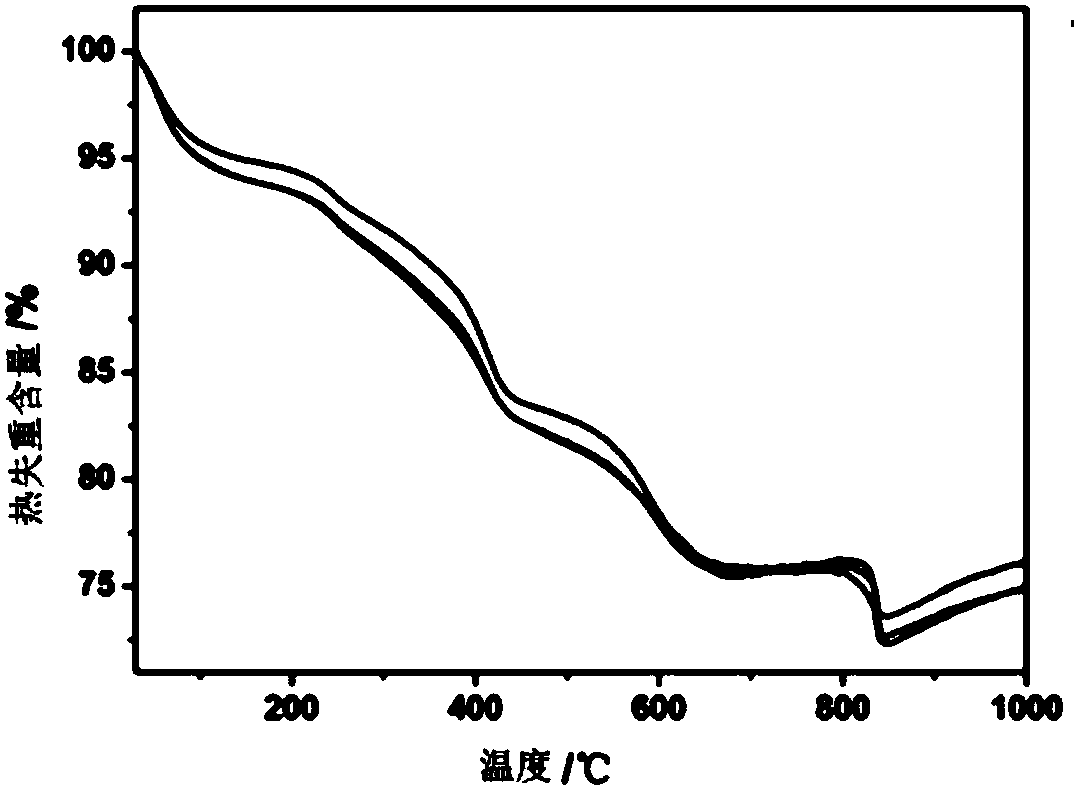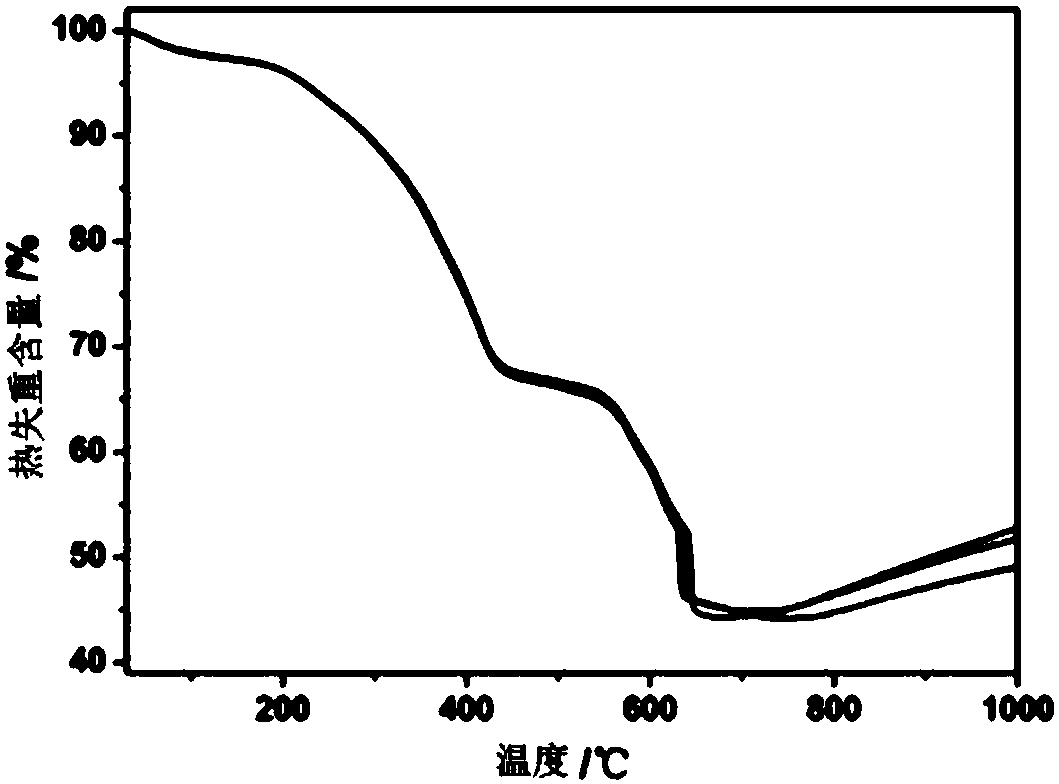Macromolecule-metallic oxide compound as well as preparation and application thereof
A technology of polymers and oxides, applied in the fields of nanotechnology and biomedical engineering, can solve the problems of inability to guarantee blood circulation characteristics, poor physiological stability, weak chelation, etc., achieve good imaging effects, reduce preparation costs, and heat efficiency high effect
- Summary
- Abstract
- Description
- Claims
- Application Information
AI Technical Summary
Problems solved by technology
Method used
Image
Examples
Embodiment 1
[0064] Synthetic steps:
[0065] First, measure 20ml of diethylene glycol with a graduated cylinder, then weigh 2g of sodium hydroxide with a precision balance, and dissolve it in diethylene glycol by ultrasonication, heating, and stirring to form solution B, solution B Put it in an oven at 70°C to keep the temperature; secondly, weigh 6g of polyacrylic acid with a weight average molecular weight of 1000Da in a beaker, then weigh 500ml of diethylene glycol in a beaker, stir and ultrasonically dissolve the two; quickly weigh 2g of anhydrous ferric chloride was dissolved in a mixture of diethylene glycol and polyacrylic acid by heating, ultrasonication and stirring to form solution A (the solution was brown); finally, solution A was placed in a three-necked flask Keep the temperature at 200°C for 20 minutes in a microwave reactor, then quickly add hot solution B, the reaction proceeds instantaneously, and keep the temperature for 30 minutes. After cooling, polyacrylic acid-iron...
Embodiment 2
[0067] Synthetic steps:
[0068] First, measure 100ml of ethylene glycol with a graduated cylinder, then weigh 8g of sodium acetate with a precision balance, and dissolve it in ethylene glycol through ultrasonication, heating, and stirring to make solution B, and put solution B in an oven at 70°C to keep the temperature Next, take weight-average molecular weight and be that polyacrylic acid 12g of 5000Da is in the beaker, then weigh 360ml ethylene glycol in the beaker, stirring, ultrasonic make both dissolve; Quickly weigh ferric sulfate 8g, by heating, ultrasonic, stirring Dissolve it in a mixture of ethylene glycol and polyacrylic acid to form solution A (the solution is brown); finally, put solution A in a three-necked flask and keep the temperature at 220°C for 10 minutes in a microwave reactor, then quickly add hot solution B , The reaction proceeds instantaneously, and the temperature is kept constant for 10 minutes. After cooling, polyacrylic acid-iron oxide composite ...
Embodiment 3
[0070] Synthetic steps:
[0071] First, measure 100ml of propylene glycol with a measuring cylinder, then weigh 15g of sodium borohydride with a precision balance, and dissolve it in propylene glycol by ultrasonication, heating, and stirring to form solution B, which is placed in an oven at 70°C to keep the temperature constant; secondly, Weigh 30g of polyacrylic acid with a weight average molecular weight of 3000Da in a beaker, then weigh 1000ml of propylene glycol in a beaker, stir and ultrasonically dissolve the two; quickly weigh 30g of ferric hydroxide, and dissolve it in the beaker by heating, ultrasonic and stirring. In the mixture of propylene glycol and polyacrylic acid, prepare solution A (the solution is brown); finally, put solution A in a three-necked flask and keep the temperature in a microwave reactor at 240°C for 20 minutes, then quickly add hot solution B, and the reaction proceeds instantaneously. Constant temperature 30min. After cooling, polyacrylic acid-...
PUM
| Property | Measurement | Unit |
|---|---|---|
| molecular weight | aaaaa | aaaaa |
| boiling point | aaaaa | aaaaa |
| particle diameter | aaaaa | aaaaa |
Abstract
Description
Claims
Application Information
 Login to View More
Login to View More - R&D
- Intellectual Property
- Life Sciences
- Materials
- Tech Scout
- Unparalleled Data Quality
- Higher Quality Content
- 60% Fewer Hallucinations
Browse by: Latest US Patents, China's latest patents, Technical Efficacy Thesaurus, Application Domain, Technology Topic, Popular Technical Reports.
© 2025 PatSnap. All rights reserved.Legal|Privacy policy|Modern Slavery Act Transparency Statement|Sitemap|About US| Contact US: help@patsnap.com



